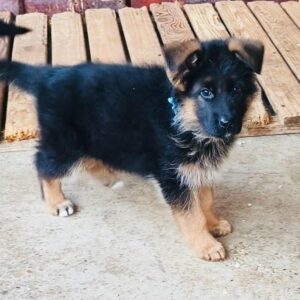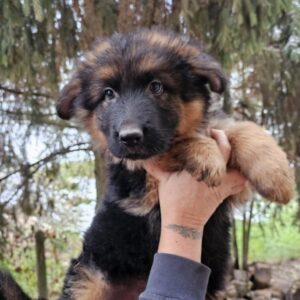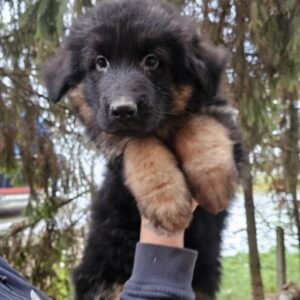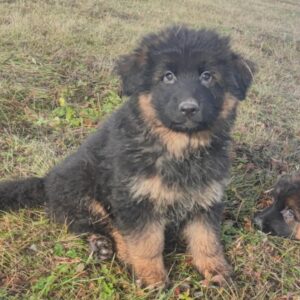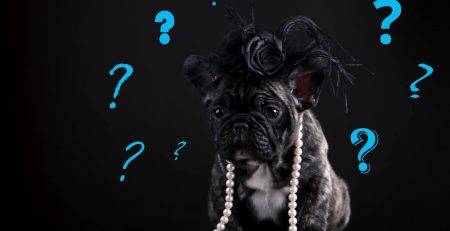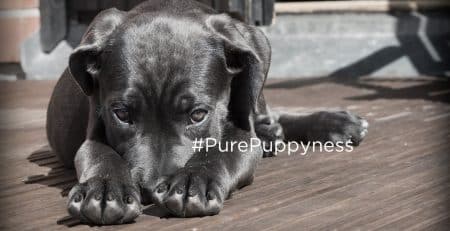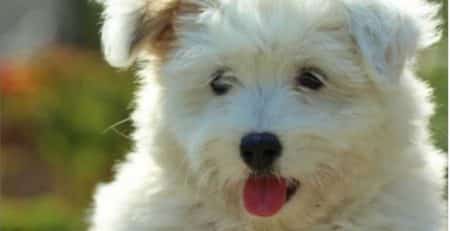History of the German Shepherd
The German Shepherd (sometimes called the Alsatian) is one of the most popular dogs in the world. It’s easy to see why: they’re handsome, intelligent, and incredibly loyal dogs. Moreover, the German Shepherd is a versatile dog. Although they were originally bred for herding, they have also been used in search and rescue, military and police work, guide and assistance work, and even as actors (such as the famous Rin Tin Tin). No wonder they’re so popular!
Origins
The German Shepherd was originally bred for herding. Shepherds from all over Germany bred dogs that were quick and agile, and able to learn and follow a variety of commands. However, dogs from different regions looked quite different. Captain Max von Stephanitz, a captain in the German cavalry, admired these dogs. He wanted to create an ideal standard working dog from the various regional breeds: a dog that had the best traits from all of them.
In April 1899, Captain von Stephanitz saw a wolf-like dog at a dog show. He bought the dog, Hektor Linksrhein, later renaming him Horand. Von Stephanitz was so impressed by his new dog’s physique and brainpower that he decided to found a breed from Horand’s descendants.
Although he initially wanted to breed herding dogs, the Captain realised that since Germany was becoming more industrialised, there was less need for such dogs. However, this didn’t stop him, as von Stephanitz realised that such an agile and clever dog would be perfect for police and military work.
Captain von Stephanitz was proved right about the new breed’s versatility. German Shepherds were used in the First World War, and had many different jobs. During the war, German Shepherds worked for the Red Cross, carried messages and supplies, and acted as rescue dogs and sentries.
Controversy
Unfortunately in more recent years, German Shepherds bred outside of Germany have lost much of the breed’s original vigour and agility. Many breeders began to emphasise winning dog shows over breeding an athletic and healthy dog. Often, German Shepherds bred for shows have a very sloped back that makes it harder for the dog to move the hind legs properly. The winner of Crufts 2016 was one such dog, which led to a storm of criticism from the public.
Fortunately, German Shepherds that are not bred for shows retain the athletic qualities of the original dogs, though they do suffer some hereditary problems.
Appearance
German Shepherds are medium to large dogs. They have a wolf-like appearance, with a bushy tail, upright ears and a long, square muzzle. Although their coat is normally black and tan, it’s also possible to find white or black German Shepherds, though all white dogs cannot compete at breed shows. They normally have short, thick fur, but occasionally long-haired Shepherds can be seen.
Temperament
German Shepherds are very intelligent and energetic animals. This isn’t a dog for couch potatoes. If you want a German Shepherd, get ready for lots of exercise and training. They need company and shouldn’t be left on their own for hours on end, as they can suffer from separation anxiety. German Shepherds also tend to be aloof towards strangers, though very loving towards their family. Be ready for lots of brushing, as these dogs are prone to shedding.
If you are ready to commit to a daily exercise regime and training from an early age, the German Shepherd can make a wonderful pet. They excel at sports such as Schutzhund and Canine Agility, and are truly loyal and loving.
Health
The German Shepherd is prone to some hereditary problems. Hip dysplasia is a common problem where the femur does not fit correctly into the socket of the hip, which can lead to increasing lameness as the dog ages. They are also at risk of elbow dysplasia, bloat, and allergies. You can avoid some of these issues by buying from NewDoggy.com as we do business with responsible dog breeders only. Be sure to take your dog to regular check-ups at the vet, as early diagnosis means early treatment.



